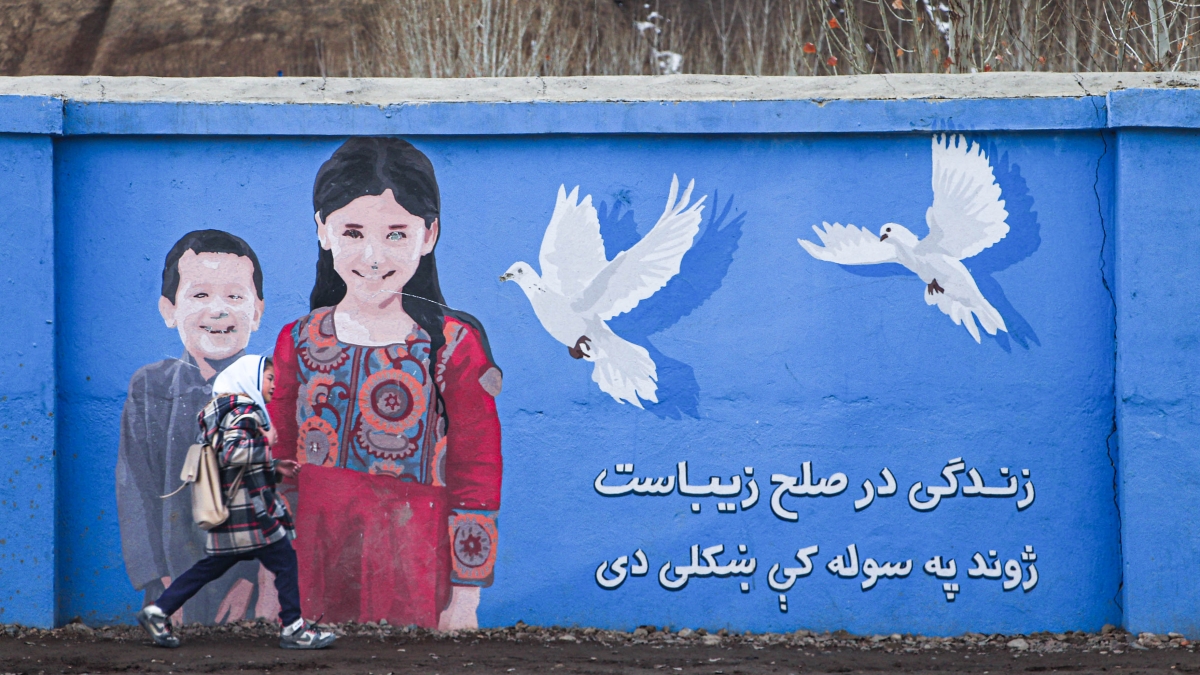It has been a long and unforgettable journey from Afghanistan to Arizona for Sabira Madady and dozens of other young women now furthering their education and finding community at Arizona State University.
Madady is one of 64 students who found educational refuge at ASU in December 2021 after fleeing repressive rule reprised in their home country just months earlier. Many times since arriving at ASU, she and others have recounted their harrowing experience leaving the country and community that shaped them before the Taliban takeover. And it is an important story to retell, not the least of which because it raises awareness for the plight of women living in Afghanistan and facing restrictions unimaginable for many in the Western world in terms of dress, conduct and education.
RELATED: 61 young Afghan women arrive to begin new life as Sun Devils
Yet, Madady also holds space to share fond and rarely told stories of Afghanistan — the nation in which she grew up, one framed by picturesque landscapes; skiing on snow-capped mountains; cycling along winding pathways; cooking, culture and a community at peace in the Bamyan Province of Afghanistan’s central highlands.
She is telling that story through a collection of photos now on display at the Multicultural Communities of Excellence space in the Student Pavilion on ASU’s Tempe campus. The exhibit is titled "Aaghil," a Persian word meaning community and, as Madady explained at the grand opening of her exhibit, reflective of the images and memories she holds dear of her community in Bamyan.
Video: Sabira Madady (right) discusses her photo exhibit "Aaghil" with Northlight Gallery curator Elizabeth Allen.
The "Aaghil" exhibit features photographs captured by Madady and her photographer friend Shamshad Noori before they left Afghanistan in August 2021. To create the exhibit, Madady enlisted the help of some new friends from across the ASU community, including Elizabeth Allen, the curator of the School of Art’s Northlight Gallery in downtown Phoenix.
Allen, who mentored Madady through the curation process of the photo collection, was introduced to Madady through Melita Belgrave, associate dean for the Culture and Access Department at the Herberger Institute for Design and the Arts, which helped to plan and stage the exhibit in collaboration with Educational Outreach and Student Services’ Cultural Connections team.
The Coalition of International Students, the International Students and Scholars Center, Education for Humanity and the ASU Foundation also contributed to the launch of the "Aaghil" exhibit. The collection was recently displayed at a Greater Phoenix Leadership gathering at the Arizona Biltmore, and at an ASU Foundation event celebrating the anniversary of the Afghan students’ arrival to ASU. That event was held at the Walter Cronkite School of Journalism and Mass Communication in downtown Phoenix and included remarks from ASU President Michael M. Crow and Gov. Doug Ducey.
"Aaghil" will be on display at the Student Pavilion in Tempe through Dec. 14 and is expected to move to other Multicultural Communities of Excellence locations on other campuses in the near future. Learn more about the exhibit and the stories behind the photos here.
Top photo: A young Afghan girl walks past a mural that reads "Life in peace is beautiful" in Persian. Photo by Sabira Madady
More Arts, humanities and education

ASU’s Humanities Institute announces 2024 book award winner
Arizona State University’s Humanities Institute (HI) has announced “The Long Land War: The Global Struggle for Occupancy Rights” (Yale University Press, 2022) by Jo Guldi as the 2024…

Retired admiral who spent decades in public service pursuing a degree in social work at ASU
Editor’s note: This story is part of coverage of ASU’s annual Salute to Service.Cari Thomas wore the uniform of the U.S. Coast Guard for 36 years, protecting and saving lives, serving on ships and…

Finding strength in tradition
Growing up in urban environments presents unique struggles for American Indian families. In these crowded and hectic spaces, cultural traditions can feel distant, and long-held community ties may be…
